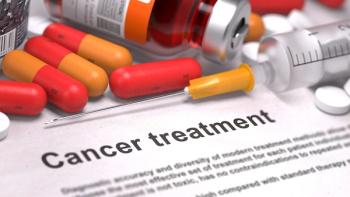
- Pharmaceutical Technology-11-02-2018
- Volume 42
- Issue 11
Single-Use Bioprocessing Equipment Trends and Adoption by CMOs
The growth in adoption of single-use systems for commercial manufacturing will be dramatic in coming years.
Single-use systems (SUS)-bioprocessing equipment designed for one-time use or a single product manufacturing campaign-has become the leading paradigm for pre-commercial (preclinical and clinical supplies) manufacturing of biopharmaceutical products (1). An estimated ≥85% of pre-commercial upstream bioprocessing now involves primarily or fully the use of single-use equipment for manufacturing. And the use of SUS for large-scale, commercial manufacturing is just starting.
This article reviews some of the SUS-related results from BioPlan Associates’ 15th annual survey of biopharmaceutical manufacturing professionals worldwide, which included responses from 352 responsible individuals, including 222 working for biopharmaceutical developers/manufacturers, and 130 working for bioprocessing suppliers or vendors. Because SUS operations directly impact bioprocessing capacity and capacity utilization, this survey has long included questions concerning SUS.
SUS current status and trends
Much has been written about the benefits and disadvantages of SUS, and the biopharmaceutical industry has accumulated more than a decade of experience with the equipment and materials. Industry consensus now includes recognition that SUS enables lower up-front capital investments and operational costs compared with classic fixed stainless steel-based equipment. SUS also provide more flexibility than stainless systems, including more rapid turnovers and availability of the same process lines for manufacturing multiple products. SUS have lower operational costs due to the elimination of cleaning, sterilizing, and (re)validation of stainless-steel equipment.
One downside of SUS, however, is the considerable recurring costs for new devices and equipment purchase for each use or campaign. Every bioprocessing facility consumes significant amounts of some type of SUS products, if only classic, legacy SUS products, such as tubing and filter membranes. In the past decade-plus, however, newer types of SUS equipment have been brought to market, and nearly all types of bioprocessing equipment are now available in SUS format. The past decade has seen rapid growth in adoption of SUS-based process lines in place of stainless steel-based equipment, to the extent that SUS process lines dominate upstream precommercial biopharmaceutical manufacturing.
Downstream bioprocessing has seen less adoption of SUS compared to upstream. It still is difficult, expensive, and rare to implement a fully or even mostly SUS downstream processing stream, as chromatography and other purification technologies to date resist cost-effective adaptation to SUS formats. Due to excessive costs, chromatography columns and separation media/resins continue to be recycled. SUS has been adopted-nearly exclusively-for mammalian cell-culture applications; microbial bioprocesses have resisted adoption of SUS.
Microbial bioprocessing compared with mammalian, requires higher temperatures, pressure, use of special atmospheres, and more energetic mixing and aeration. Some microbial SUS product lines are now marketed, but do not appear to have gained traction in the market. On the other hand, most cellular and gene-therapies bioprocessing involves use of SUS, and despite adoption of plastic systems, a capacity crunch is expected in these sectors (2).
In the early 2000s, a few single-use systems, such as simple WAVE bag bioreactors (now from GE) on rocker platforms, and a few primitive fixed-wall SUS bioreactors with plastic liners, were available; these systems were limited in size, such as a few hundred liters. Late-stage clinical and commercial manufacturing, however, requires larger capacity. Today, a variety of single-use bioreactors and other products are available, with most product lines going up to 2000-L scale.
Some suppliers are pushing this limit (e.g., ABEC now offers 4000-L SUS bioreactors). Each 1000 L of bioprocessing fluid weighs approximately 2200 lbs., making SUS with capacities above 2000 L unwieldy, difficult to install and move, not practical, or cost-effective for many facilities. Stainless steel still dominates commercial manufacturing, which thoroughly dominates all bioprocessing capacity-wise; precommercial manufacturing is only done as needed and involves much smaller quantities than needed to supply world commercial markets.
Currently, 1000-L and 2000-L SUS bioreactors-with multiple bioreactors used in parallel if needed-are on track to become the industry standard for new large- and commercial-scale manufacturing, eventually replacing larger stainless-steel units and facilities. Thus far, there are few such facilities, but a trend for building SUS-commercial manufacturing facilities is starting, and growth in adoption of SUS for commercial manufacturing will be dramatic in coming years, albeit from a very low baseline. However, much commercial manufacturing, particularly at the largest scales, remains more cost-effective when using large, fixed stainless-steel equipment-based process lines/facilities. Most commercial manufacturing, in terms of new facilities and total capacity, will continue to be stainless steel-based for at least the next five years.
A major trend supporting growth in adoption of SUS has been the steady increase in bioprocessing productivity, particularly upstream, in the past three decades since the introduction of recombinant products in the early 1980s (1).
Bioprocessing productivity, especially upstream titers, has increased, essentially doubling about every five years, going from just a few tenths of a gram/L to the 3.2 grams/L that is now reported by BioPlan’s survey respondents as the average titer being attained at both clinical and commercial scales. This trend is expected to continue in the near term. Larger volumes of biopharmaceutical products can increasingly be manufactured using smaller or the same scale equipment. Only a decade ago, a facility producing several 100 kg/year of monoclonal antibodies would have required multiple dedicated ≥10,000-L stainless steel bioreactors and other comparably-scaled equipment. Today, the same amount can be manufactured with a few or even just one 500–2000-L SUS bioreactor faster and at lower cost.
The survey also found outsourcing of bioprocessing has remained steady, if not slowly increasing, with companies now taking a strategic approach to outsourcing versus seeking to outsource everything they possibly can.
CMOS and SUS
Contract manufacturing organizations (CMOs) use more SUS equipment and use it more frequently compared with developer/manufacturer companies. As shown in Figure 1, survey respondents from CMOs reported increased use of SUS products vs. developers/manufacturers in nearly every product category surveyed.
This increased use of SUS by CMOs is fully expected, with CMOs needing the flexibility that SUS offers to rapidly switch over process lines or suites to manufacture different products at different scales. CMOs are highly motivated to get a facility or project up and running as quickly as possible; they do not have time to construct and validate stainless-steel process lines. CMOs, compared to developers/manufacturers, have more products to manufacture for clients and generally at non-commercial scales.
The past 12-year increases in the adoption of different types of SUS as reported by surveyed bioprocessing professionals, in terms of first use at facilities, are shown in Figure 2. There have been approximately 50% increases in first use/adoption of major, big-ticket, SUS equipment, including bioreactors, mixing systems, membrane adsorbers, and perfusion devices.
Figure 2: Twelve-year percentage-point change in first-usage of disposables,
2006–2018 (selected data). Note: Not growth in sales, this is growth in application
first usage within a facility.
Some problems and issues involving SUS still inhibit its adoption. For example, when asked in the recent annual survey to cite the most important reason for not increasing their use of SUS, 25% of CMO respondents (vs. 17% with developers) cited high cost; 25% said “leachables and extractables are a concern” (vs. only 10% with developers); and 13% of CMO respondents cited a “lack of disposable equipment that meets process requirements”, and “breakage of bags and loss of production material were a concern”, compared to 9% and 8% of developer respondents, respectively. Fully 70% of CMOs cited some factors limiting their adoption of SUS. But CMOs do what clients want, and clients increasingly want to adopt SUS for commercial manufacturing of products in development.
As other parts of the annual survey regularly show, end-users identify improvements in SUS at the top, or among the top areas, where suppliers need to focus their R&D and bring new technologies to market.
Conclusion
CMOs have extensively adopted SUS-based bioprocessing over the past decade-plus, and CMO bioprocessing in terms of the number of process lines, facilities, and products manufactured, especially at clinical scale-is now primarily SUS-based. Stainless-steel equipment still dominates in terms of total overall capacity; commercial manufacturing scales often are using legacy stainless-steel facilities or are producing at volumes where SUS is not a viable approach.
CMOs now rarely implement stainless-steel process lines for client product manufacturing. By using single-use vs. stainless steel systems, CMOs can save on facility, campaign and operating costs, and capital investments, while gaining needed flexibility, including rapid process line turnover, enabling manufacture of more products more rapidly at diverse scales. The differences in views and adoption of SUS by CMOs vs. developers reflects the business models of each, with CMOs needing speed and flexibility, and taking a transactional approach. Developers have fewer products to manufacture at larger scales and seek more long-term and cost-effective commercial manufacturing approaches; using large stainless steel-based process lines still generally fits that bill. But with more products in development having smaller, even orphan markets; titers and bioprocessing productivity continuing to increase; and product potency increasing, volumetric needs for commercial manufacturing are decreasing, with this facilitating an increasing percentage of new commercial manufacturing using SUS.
References
1. E.S. Langer, et al., 15th Annual Report and Survey of Biopharmaceutical Manufacturing Capacity and Production (BioPlan Associates, April 2018).
2. R. A. Rader, Genetic Engineering & Biotechnology News (GEN), 37(20) (Nov. 15, 2017).
Article Details
Pharmaceutical Technology
Vol. 42, Issue 11
November 2018
Pages: 52-56
Citation
When referring to this article, please cite it as R. A. Rader and E. Langer, "Single-Use Bioprocessing Equipment Trends and Adoption by CMOs," Pharmaceutical Technology 42 (11) 2018.
Articles in this issue
about 7 years ago
Guidelines on Integral Drug-Device Combinationsabout 7 years ago
Detachable AODD Pumpabout 7 years ago
Advanced Paddle Blender for Labsabout 7 years ago
Custom Multi-Shaft Mixerabout 7 years ago
Bioimaging Molecular Probesabout 7 years ago
User Requirements Specifications–How Difficult Can It Be?about 7 years ago
Innovations in Prefilled Syringes for Biologic Drugsabout 7 years ago
Media Requirements for Different Cell SourcesNewsletter
Get the essential updates shaping the future of pharma manufacturing and compliance—subscribe today to Pharmaceutical Technology and never miss a breakthrough.




